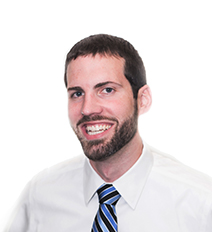
Perhaps it’s just me, but every time I pour fertilizer onto my small crop of rhubarb, blackberries, raspberries, and cherries, I feel lucky. Lucky that we live in a time and place where companies around the world have spent the time and energy to mine out the initial raw material and that other companies, like EnP, turn that raw material into forms that maximize their uptake into plants.
A Brief History of Fertilizers
Our grandparents might still remember a time when fertilizing with inorganic nitrogen was a new concept. This concept came about after the cessation of World War II, due to the excess of nitrogen reserves. From there, applying each individual nutrient with precision slowly became possible. As yields increased along with better-cultivated varieties of plants, the fertilizer industry began to grow.
Today the conversation piece centers mostly around how we can maximize the uptake of nutrients that we apply or how we can get more nutrients into the plant and less into the environment. After all, we should all try to be good stewards of the land. However, there’s something else to this discussion that no one’s really talking much about, at least in our community. With the exception of nitrogen (which is captured from the air), the raw materials for fertilizer that we have on this earth are a finite resource.
A Finite Resource
The minerals and metals that we use for our plants today were formed billions of years ago, produced either inside stars as a result of nuclear fusion, or for heavier elements (such as iron and the like) through supernovae explosions. Some of the heaviest elements (think plutonium) are now believed to have formed from cataclysmic collisions of neutron stars (remnants of giant stars). These elements then found their way onto earth through a series of meteorite impacts that served to shape our earth as we know it today.
As such, the raw material we have on the planet today is the raw material we’re always going to have. This necessarily means that everything is finite. While some mineral reserves are seemingly inexhaustible, other important minerals are in relatively short supply. There are specialty-interest groups that monitor the reserves and supply of various metals around the world. The Copper Alliance, for example, estimates that the world has on average about 40 years of copper reserves and about 200 years left of copper resources. The United States Geological Survey tracks mineral uses in the US and estimates their world reserves. Manganese, for example, is estimated to have a world reserve of about 760 million metric tons (with most of that located in 10 different countries). The US alone used almost 1 million metric tons last year for various industrial purposes (including agricultural uses). Zinc had a similar level of consumption in the US but has a lower world reserve of around 230 million metric tons. Even though we might not have to worry about minerals running out in our lifetime, it doesn’t mean that we’re still not safe from severe short-term shortages due to weather, labor shortages, or unstable political regimes.
Ways to Conserve Resources
Part of the solution is to maximize the efficiency of uptake into the plant. Getting a higher percentage of nutrients into the plants through chelation (thereby increase the solubility of the mineral and reducing its interaction with other minerals) or through inhibition (like with Armament, which inhibits the formation of insoluble mineral precipitates in the soil) are good steps.
Only applying what the plant needs is another step in the right direction. Using Soil Solver® as a tool to help determine one’s levels of exchangeable nutrients (total amount of nutrients in the soil) and available nutrients (nutrients that are in the solution and therefore available to the plant) along with the pH, CEC, and organic matter is an excellent way to help build one’s nutritional program correctly. Conducting routine tissue tests will also help in telling the story of what’s in the soil, and what’s actually being taken up into the plant.
Fertilizers Are a Finite Luxury
It continues to be a humbling process to consider everything that went into the making of the minerals we use. Events that played out billions of years ago continue to have an impact on how we move forward in our industry today. Still not convinced that using high-quality, diverse fertilizers isn’t a luxury? Investing in nutritional technologies and diagnostic testing will also help you save money over a period of time. So, whether you approach it from a business or an altruistic perspective, it’s a win, and the net effect is conserving a resource that is certainly finite.



